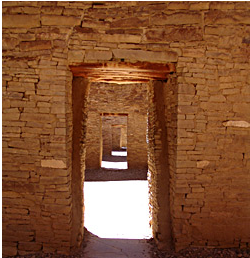Publication Date
5-13-2019
Abstract
Individuals of Hispanic, Latino, or Spanish (HLS) origin suffer disproportionately from higher poverty rates, less education, less access to health care, and greater risk factors for and prevalence of chronic diseases compared to their White counterparts. How health disparities emerge over the life course remains unclear. Allostatic load (AL) provides an approach in health research that utilizes a life course perspective and multi-system view of cumulative physiological, or health risk. AL is used to identify sociodemographic and biological factors that contribute to racial differences in health risk. However, AL is not widely used to explore causes of poorer health outcomes in HLS populations. New Mexico provides a unique opportunity to address gaps in our understanding of HLS health for three reasons. First, New Mexico has the largest percentage of self-identified HLS residents in the U.S. Second, some of the ethnic terms that New Mexican HLS use to describe themselves depart from the Office of Management and Budget nomenclature. Third, health disparities are particularly striking in New Mexico where performance measures in health care and health care coverage have long ranked near the lowest in the country.
This dissertation addressed three aims. First, I tested whether social and biological factors that contribute to disparities in health differ between 1) New Mexicans of Spanish-speaking descent (NMS) and other U.S. census groups, and 2) different ethnic groups of NMS. Second, I examined patterns of AL and investigated the sociodemographic and biological correlates of AL in NMS. Third, I tested whether AL is associated with six chronic disease outcomes. Data included sociocultural, biological, and anthropometric measures from 507 self-identified NMS.
I found that education, household income, skin color, and continental ancestry differ between NMS and other U.S. census groups, demonstrating that NMS are not socially or biologically homogeneous. In NMS, mean AL scores increased with age. Comparisons of AL biomarkers between NMS and other U.S. groups showed that NMS had significantly higher biomarker measures. Further, higher proportions of Native American ancestry were significantly associated with higher AL scores. Finally, I found that AL was significantly associated with only gallbladder disease and abdominal obesity.
Document Type
Dissertation
Language
English
Degree Name
Evolutionary Anthropology
Level of Degree
Doctoral
Department Name
Anthropology
First Committee Member (Chair)
Heather J.H. Edgar
Second Committee Member
Keith Hunley
Third Committee Member
Melissa Emery-Thompson
Fourth Committee Member
Michael L. Trujillo
Recommended Citation
Mosley, Carmen Veronica. "A Biocultural Examination of Health Risk Among New Mexicans of Spanish-Speaking Descent." (2019). https://digitalrepository.unm.edu/anth_etds/175

